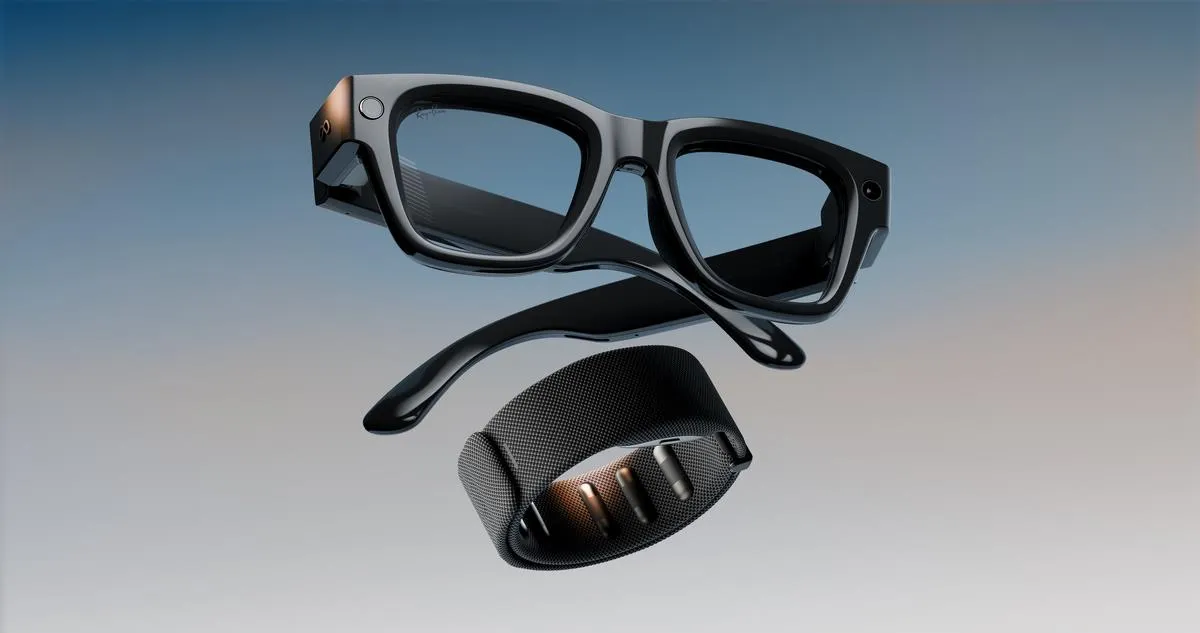
Meta has recently launched its innovative Ray-Ban Display, the company's first smart glasses featuring an in-lens display. These cutting-edge glasses are now available for purchase exclusively in select physical stores across the United States. Announced at the highly anticipated Connect 2025 event just two weeks ago, the Meta Ray-Ban Display can be found at various retailers, including Best Buy, LensCrafters, Sunglass Hut, and Ray-Ban locations, as well as the Meta Lab.
Meta strongly encourages potential buyers to book a demo before making a purchase. However, due to overwhelming demand, many locations are fully booked until late October, with some appointments extending into November and December. Interestingly, Meta has clarified that while a demo is not strictly necessary for purchasing the glasses, it is essential for determining which of the three Meta Neural Band sizes will best fit your wrist. Notably, some store managers are prioritizing initial stock for customers who have booked appointments. Meta is actively working to expand demo availability by adding more stores to meet the high demand.
Currently, the Meta Ray-Ban Display is only available in physical stores, with plans to eventually sell the product online. Meta has also announced intentions to expand its market reach, with plans to launch the glasses in the UK, Canada, France, and Italy by early 2026. For now, customers in the US will need to visit a physical location to experience this groundbreaking technology.
Priced at $800, the Meta Ray-Ban Display combines the classic features of traditional Ray-Ban glasses with a state-of-the-art heads-up display (HUD) integrated into the right lens. Users can navigate through the interface using finger gestures detected by the Meta Neural Band, which operates on the principle of surface electromyography (sEMG) to sense wrist muscle activation. The glasses offer haptic feedback, boast an IPX7 water resistance rating, and are designed to provide up to 18 hours of battery life.
The monocular HUD features a field of view of approximately 20 degrees, a brightness level of up to 5000 nits, and a resolution of 600×600, resulting in an impressive 42 pixels per degree—surpassing the Apple Vision Pro. With just 2% light leakage, the display remains discreet, ensuring that nearby individuals cannot see what is being displayed.
The Meta Ray-Ban Display offers a variety of functionalities, including:
Meta AI with Visuals: Access answers and step-by-step guides paired with visuals, enhancing the interactive experience. Messaging & Video Calling: Stay connected by viewing texts, WhatsApp messages, or Reels hands-free, and conduct live video calls with ease. Preview & Zoom: Utilize the real-time camera viewfinder and zoom features to capture the perfect shot. Pedestrian Navigation: Get turn-by-turn walking directions displayed directly on your glasses, making navigation seamless. Live Captions & Translation: Break language barriers with live captioning and real-time translation capabilities. Music Playback: Control your music playback conveniently through the glasses' display, with easy navigation using finger gestures.Weighing in at 69 grams, the Meta Ray-Ban Display is slightly heavier than the standard Ray-Ban Meta glasses, which weigh 52 grams. The frame is also bulkier due to the integrated display, featuring thicker temples. Despite these changes, the glasses are designed to be comfortable for everyday wear. While Meta claims a typical use battery life of around six hours, real-world testing will be necessary to confirm this figure.
Looking ahead, a software update scheduled for December will introduce new features, such as text input through the Meta Neural Band, allowing users to swipe letters on a physical surface. This advancement could greatly enhance the usability of the Meta Ray-Ban Display and broaden its functionality.
In conclusion, the Meta Ray-Ban Display represents a significant leap in smart eyewear technology, merging style with innovative features. As the demand grows, Meta's commitment to enhancing user experience and expanding its market will undoubtedly shape the future of augmented reality in everyday life.